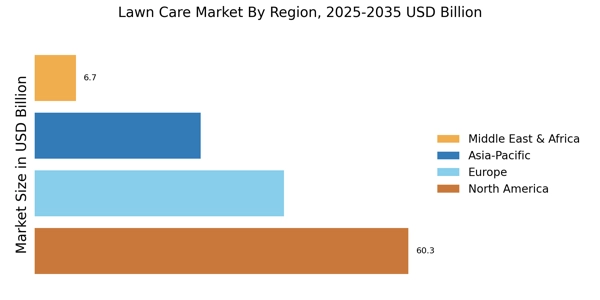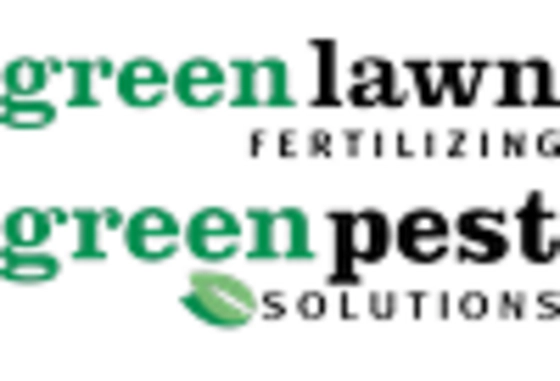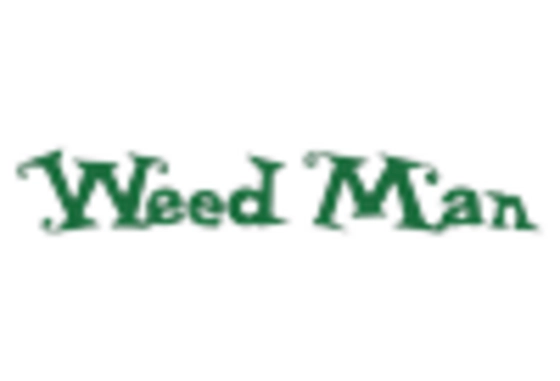The Lawn Care Market is currently characterized by a dynamic competitive landscape, driven by increasing consumer demand for sustainable and aesthetically pleasing outdoor spaces. Key players such as TruGreen (US), Lawn Doctor (US), and Scotts Miracle-Gro (US) are strategically positioned to capitalize on these trends. TruGreen (US) focuses on personalized lawn care solutions, leveraging data analytics to enhance customer engagement and service efficiency. Meanwhile, Lawn Doctor (US) emphasizes localized service delivery, which allows for tailored solutions that resonate with regional preferences. Scotts Miracle-Gro (US) is heavily invested in product innovation, particularly in eco-friendly fertilizers and pest control solutions, which aligns with the growing consumer preference for sustainable products. Collectively, these strategies not only enhance their market presence but also contribute to a competitive environment that increasingly prioritizes sustainability and customer-centric services.
In terms of business tactics, companies are increasingly localizing their operations to better meet regional demands and optimize supply chains. The Lawn Care Market appears moderately fragmented, with a mix of large national players and smaller regional firms. This structure allows for a diverse range of services and products, fostering competition that drives innovation. The collective influence of these key players shapes market dynamics, as they continuously adapt to consumer preferences and regulatory changes.
In August 2025, TruGreen (US) announced a partnership with a leading technology firm to integrate AI-driven analytics into their service offerings. This strategic move is expected to enhance operational efficiency and customer satisfaction by providing tailored lawn care solutions based on real-time data. The integration of AI not only positions TruGreen (US) as a technology leader in the lawn care sector but also reflects a broader trend towards digital transformation within the industry.
In September 2025, Lawn Doctor (US) expanded its franchise model, introducing a new training program aimed at enhancing service quality across its network. This initiative is significant as it underscores Lawn Doctor's (US) commitment to maintaining high service standards while scaling operations. By investing in franchisee training, the company aims to ensure consistency in service delivery, which is crucial for customer retention and brand loyalty.
In July 2025, Scotts Miracle-Gro (US) launched a new line of organic lawn care products, responding to the increasing consumer demand for environmentally friendly options. This product line not only diversifies their portfolio but also aligns with the growing trend towards sustainability in lawn care. The launch is indicative of Scotts Miracle-Gro's (US) proactive approach to market demands, positioning the company favorably against competitors who may be slower to adapt.
As of October 2025, the Lawn Care Market is witnessing a shift towards digitalization, sustainability, and the integration of advanced technologies such as AI. Strategic alliances are becoming increasingly important, as companies seek to enhance their service offerings and operational efficiencies. The competitive landscape is evolving, with a noticeable shift from price-based competition to a focus on innovation, technology, and supply chain reliability. This trend suggests that future competitive differentiation will hinge on the ability to deliver unique, high-quality services that meet the changing preferences of consumers.


















Leave a Comment